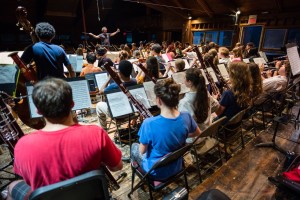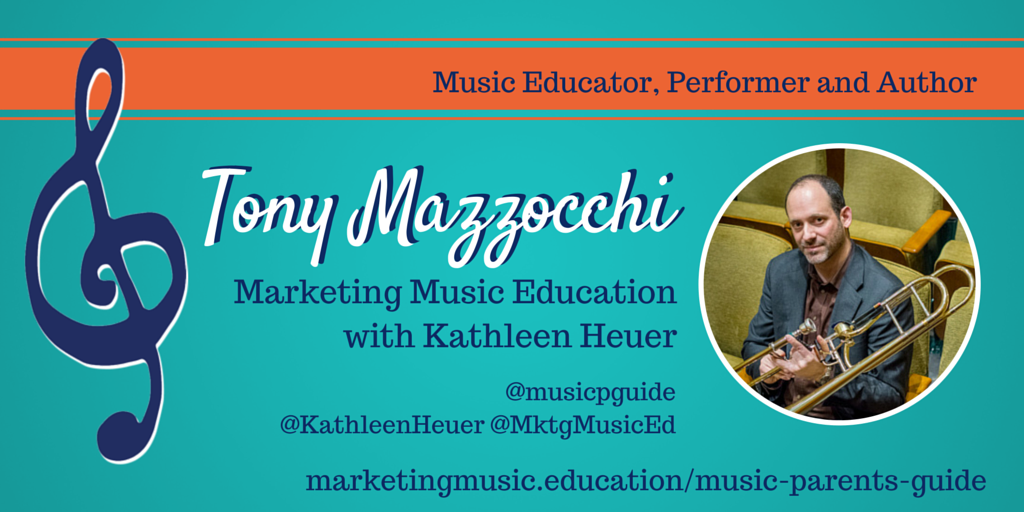 There is no more exciting or important time in a child’s musical life than the day they choose which instrument they want to learn to play in school. More often than not, this choice occurs on a day where the instruments of the band and orchestra are introduced to students during an assembly or some other format.
There is no more exciting or important time in a child’s musical life than the day they choose which instrument they want to learn to play in school. More often than not, this choice occurs on a day where the instruments of the band and orchestra are introduced to students during an assembly or some other format.
In order to ignite the proper spark in students, it’s crucial that their first exposure to instruments that are offered is well planned and extremely well executed. The more thought and preparation that goes in to the presentation, the more rewarding the musical experience will be for years to come for students, parents and teachers.
The instrument demonstration is also a unique opportunity for children, teachers, and professional musicians to come together in mutually beneficial ways — this “trifecta” of arts immersion is the key to a successful school arts programs.
Here are a few things to keep in mind when introducing instruments to children on a “recruiting day”:
Students need to hear instruments played beautifully up close and personal. To become great at something, students much watch the skill being performed very intensely and consistently until they build a high-level vision of the skill in their own mind. This process begins on the very first day they hear each instrument played. Therefore, it is crucial that every instrument is played by an excellent performer so students can hear the most beautiful sounds possible. Teachers shouldn’t play an instrument for students that they do not play well, as it will severely decrease the chance of a student falling in love with the sound and picking the instrument truly meant for them. While watching videos of great performers is crucial to learning later on, teachers should do everything in their power to ensure students are exposed to live musicians for the initial instrument demos.
Be honest about your strengths and weaknesses as a recruiter. We all have different personalities and therefore different strengths and weaknesses as public speakers. A more quiet and reserved teacher may need to “hook” students with some popular music, whereas a more charismatic teacher can play almost anything and get kids hooked. There must be balance, though — if students are all attracted to one instrument for what may seem like the wrong reasons, everyone loses out in the long-term. Finding very outgoing, excited and great musicians is challenging, but very worth everyone’s while when it comes to instrument demos. It’s also important to “script” the demo so it flows well and everyone has balanced time to demonstrate each instrument to its fullest potential.
Balanced instrumentation is crucial for a great program, but students connected with the best instrument for them is more important. The beginning of the end of a music program is an ensemble that is riddled with tons of saxophone and percussion players, or any other unbalanced group. It’s also important to not pair students with instruments that they haven’t chosen on their own — I would argue that is pedagogically and morally unsound. Giving students two or three choices of instrument helps, as does limiting options to play more “desirable” instruments. It takes time and professional development to learn how to teach the more esoteric instruments such as oboe, bassoon or french horn — but it’s very much worth a teacher’s while to do so. This will further help balance issues in one’s program.
Create an “Instrument Petting Zoo”. Sometime during the school year, teachers — in collaboration with local music vendors — can arrange to visit area classrooms where they see kids in smaller groups for individualized, hands-on learning. For each group, the musicians give a 5-minute talk about the instruments, then help students try each instrument. This works well a year in advance of the instrument demos for potential orchestra and band students — it never hurts to plant the seeds early. This “petting zoo” can also be arranged as an assembly.
Bring the high school ensembles to the elementary school. The importance of inter-visitation and even some vertical teaching cannot be overstated. As it pertains to instrument demos, it is very powerful for young students to see older students in the same school system perform and tell their own story of how they began playing and where they are now. With careful planning, these trips can have profound effect on a district’s music program.
Follow up with a letter home. Most of us grow up being taught that talent is an inheritance, and most parents of the students we serve are likely to still believe it. Therefore, many people still believe that the sign of talent is instant success — often in the form of making a good sound immediately. We know now that this assumption is false, and it is important to follow-up immediately with parents and teachers about this idea — especially after students attempt to play an instrument for the first time and don’t sound that good. Think about how many students listen to an amazing instrument demo and then try to play an instrument at a “petting zoo” afterward…poorly. How many go home and tell their parents that they aren’t talented — and how many parents believe them because they were not involved in music through their own schooling? We must take every opportunity to let every school stakeholders know that 1) Every student has talent, and 2) It is up to us to develop those talents to their full potential.
Each and every year, a “reset” button is hit in our schools. Hundreds of thousands of students see the instruments of the band and orchestra and want to learn to play them. More than that, they want to be good at playing them. This is a moment — our moment — to create an environment in our schools that we all dream of having. An environment that fills students’ brains with beautiful images of what they want to become; music rooms that ignite passions; and consistent connections with role models who have the potential to vastly increase students’ motivation.
The magic starts with the introduction to the instruments in school. Plan well.








Leave a Comment